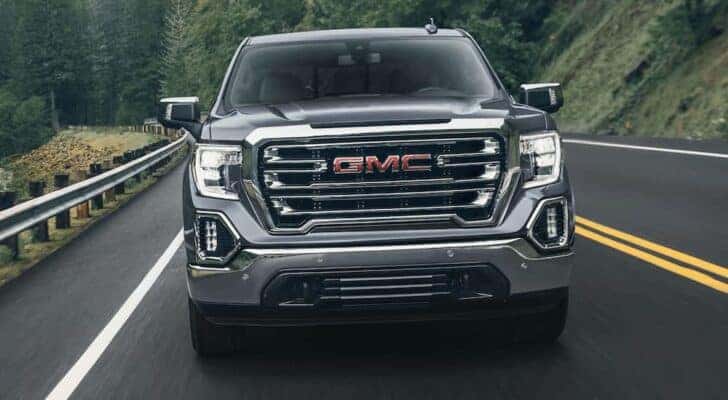Tuk Tuk USA: Navigating the American Market for a Global Icon
Tuk Tuk USA: Navigating the American Market for a Global Icon cars.truckstrend.com
The bustling streets of Bangkok, the winding alleys of Rome, or the vibrant markets of New Delhi – for decades, the iconic three-wheeled auto-rickshaw, affectionately known as the Tuk Tuk, has been synonymous with rapid, agile, and often exhilarating urban transportation across the globe. Characterized by its distinctive open-air design, a front-mounted engine (or electric motor), and a small cabin for passengers or cargo, the Tuk Tuk embodies a unique blend of practicality, cultural charm, and a touch of adventurous spirit.
But what about "Tuk Tuk USA"? Far from its traditional Asian strongholds, this humble yet versatile vehicle is carving out an increasingly prominent niche in the American landscape. "Tuk Tuk USA" refers to the growing phenomenon of these vehicles being imported, adapted, and utilized across the United States, not just as a novelty, but as a practical, eco-friendly, and highly effective solution for various transportation and commercial needs. From charming city tours and efficient last-mile deliveries to eye-catching mobile businesses and unique event shuttles, the Tuk Tuk is proving its surprising adaptability and relevance in a market historically dominated by larger, conventional vehicles. This comprehensive guide will delve into the world of Tuk Tuk USA, exploring its emergence, applications, challenges, and the exciting opportunities it presents for entrepreneurs and consumers alike.
Tuk Tuk USA: Navigating the American Market for a Global Icon
The Unexpected Rise of the Tuk Tuk in America
The journey of the Tuk Tuk to American shores is a fascinating tale of cultural exchange and practical innovation. Originating from modified auto-rickshaws and scooters in post-WWII Asia, these vehicles quickly became the backbone of public transport in many developing nations due to their low cost, maneuverability, and fuel efficiency. For years, the idea of a Tuk Tuk operating on American streets seemed largely confined to exotic travel documentaries or a quirky personal import.
However, as urban centers in the U.S. became more congested, parking became scarcer, and the demand for sustainable, efficient, and unique transportation options grew, the Tuk Tuk found its moment. Early adopters recognized its potential beyond mere novelty. The rise of eco-consciousness pushed for smaller, more fuel-efficient, or even electric alternatives to traditional cars. The burgeoning tourism industry sought novel ways to engage visitors, and the "experiential" economy favored unique modes of exploration. Simultaneously, the e-commerce boom created a pressing need for agile, cost-effective last-mile delivery solutions in dense urban environments.
Today, companies specializing in importing, customizing, and distributing Tuk Tuks are flourishing. They are adapting these vehicles to meet U.S. safety standards, offering electric versions to appeal to green initiatives, and showcasing their versatility for a range of commercial applications, marking a significant shift from a foreign curiosity to a viable, if unconventional, American vehicle.
Diverse Applications: Where Tuk Tuks Thrive in the USA
The adaptability of the Tuk Tuk is perhaps its greatest asset in the American market. Its compact size, open design, and relatively low operating costs make it ideal for a variety of specialized uses where traditional vehicles might be overkill or impractical.

Tourism and Sightseeing Tours: This is arguably the most visible application. Tuk Tuk tours offer an intimate, open-air experience of cities, allowing passengers to soak in the sights, sounds, and smells of a destination in a way a closed bus or car cannot. Companies in cities like San Diego, Nashville, and Charleston operate fleets, providing narrated tours that are both eco-friendly and memorable.
-
Last-Mile Delivery Services: With the explosion of online shopping and food delivery, the Tuk Tuk is an excellent solution for navigating congested city streets, delivering packages, groceries, or meals quickly and efficiently. Its small footprint allows it to access areas larger vans cannot, and its lower operating costs can translate to significant savings for businesses.
-
Event Shuttles and Corporate Transport: For large events, festivals, weddings, or corporate campuses, Tuk Tuks provide a fun, distinctive, and practical way to shuttle guests or employees over short distances. They add a unique flair to any occasion and can be easily branded for promotional purposes.
-
Mobile Vending and Food Trucks: Modified Tuk Tuks are emerging as charming and efficient mobile kiosks for coffee, ice cream, artisanal goods, or even small food operations. Their compact size makes them perfect for pop-up events, farmers’ markets, or high-traffic pedestrian areas where larger food trucks might be prohibited or cumbersome.

-
Advertising and Promotions: Their eye-catching design makes Tuk Tuks natural mobile billboards. Businesses can wrap them with branding, use them for street teams, or deploy them for experiential marketing campaigns, drawing immediate attention and fostering engagement.

Navigating the Regulatory Landscape: Key Considerations
Operating a Tuk Tuk in the USA is not without its unique set of regulatory challenges, primarily due to their unconventional classification. Unlike motorcycles or standard cars, Tuk Tuks often fall into a grey area, requiring careful navigation of state and local laws.
- Vehicle Classification: The primary hurdle is how a Tuk Tuk is classified. Depending on its design, speed, and weight, it might be categorized as a low-speed vehicle (LSV), an auto-cycle, a motorcycle, or even a specialized off-highway vehicle in some jurisdictions. This classification dictates licensing, registration, insurance, and the roads it’s permitted to operate on.
- State-Specific Regulations: There is no uniform federal standard for Tuk Tuks. Regulations vary significantly from state to state and even city to city. Some states have specific laws for auto-cycles or three-wheeled vehicles, while others may require them to meet motorcycle standards (e.g., helmet laws for open vehicles).
- Safety Standards: While imported Tuk Tuks are often modified to meet U.S. Department of Transportation (DOT) standards (lights, mirrors, seatbelts), ongoing vigilance is required. Operators must ensure their vehicles comply with all applicable safety requirements, which may include speed limitations, braking efficiency, and structural integrity.
- Driver Licensing and Insurance: Depending on classification, a standard driver’s license might suffice, or a motorcycle endorsement could be required. Commercial operations will necessitate specific commercial insurance policies, which can sometimes be challenging to secure given the unique nature of the vehicle.
- Commercial Permits: Businesses using Tuk Tuks for tours, deliveries, or vending will likely need local business licenses, transportation permits, and potentially specific permits for operating in public spaces.
Thorough research into local and state regulations is paramount before purchasing or operating a Tuk Tuk commercially in the USA. Engaging with legal counsel or specialized consultants familiar with vehicle regulations is highly advisable.
Owning and Operating a Tuk Tuk in the USA: Practical Advice
For those considering entering the Tuk Tuk USA market, practical considerations extend beyond regulations to procurement, maintenance, and operational strategies.
- Purchasing: Most Tuk Tuks in the USA are imported. Buyers can choose between new vehicles from specialized importers/distributors or used models. Electric Tuk Tuks are gaining popularity due to lower emissions and quieter operation, though gasoline models offer longer range and simpler refueling. Consider the vendor’s reputation, warranty, and after-sales support.
- Maintenance: Tuk Tuks are generally robust, but like any vehicle, they require regular maintenance. Parts availability for imported models can sometimes be a challenge, so choosing a reputable dealer who stocks spares or has a strong supply chain is crucial. Electric models may have simpler powertrains but require specialized knowledge for battery and motor systems.
- Running Costs: Operating costs are typically lower than traditional vehicles. Fuel consumption for gas models is minimal, and electricity for electric models is significantly cheaper than gasoline. Insurance and registration costs will vary based on classification and location.
- Driver Training: While easy to drive, operating a Tuk Tuk, especially with passengers or cargo, requires specific skills. Drivers should be trained on the vehicle’s unique handling characteristics, safety protocols, and customer service if operating commercially.
- Marketing and Niche Identification: Success often hinges on effective marketing and identifying a clear niche. Emphasize the unique experience, eco-friendliness, and efficiency. Branding and custom wraps can make a Tuk Tuk stand out. For tours, focus on storytelling and local expertise. For delivery, highlight speed and reliability in urban environments.
Benefits and Challenges: A Balanced Perspective
The "Tuk Tuk USA" phenomenon, while promising, comes with its own set of advantages and hurdles.
Benefits:
- Unique Experience: Offers a distinctive and memorable experience for passengers, setting businesses apart.
- Eco-Friendly (Especially Electric Models): Contributes to reduced carbon emissions and noise pollution in urban areas.
- Cost-Effective: Lower purchase price, operating costs (fuel/electricity, maintenance), and insurance compared to traditional vehicles.
- Agility and Maneuverability: Excellent for navigating congested city streets and tight spaces.
- Versatility: Adaptable for multiple business models – tours, delivery, mobile vending, advertising.
- Community Engagement: Often seen as charming and approachable, fostering positive interactions with the public.
Challenges:
- Regulatory Complexity: Inconsistent and sometimes ambiguous laws across states and municipalities.
- Public Perception & Safety Concerns: Some may view them as less safe than cars, requiring education and emphasis on safety features.
- Limited Speed and Range: Not suitable for highways or long-distance travel; electric models have range limitations.
- Weather Dependency: Open-air design makes them less ideal in extreme weather conditions (though covers are available).
- Parts and Service: Finding specialized mechanics and readily available parts for imported models can be an issue.
- Capital Investment: While lower than a car, the initial investment for a fleet can still be substantial.
Solutions: Addressing these challenges involves proactive engagement with policymakers for clearer regulations, investing in safety features and driver training, educating the public about their benefits, and developing robust maintenance networks.
Tuk Tuk USA: Estimated Pricing Guide
The cost of a Tuk Tuk in the USA can vary significantly based on its type, condition (new vs. used), power source (electric vs. gas), level of customization, and the importer/dealer. The table below provides a general estimate for different categories:
| Tuk Tuk Type / Feature | Estimated Price Range (USD) | Key Considerations |
|---|---|---|
| New Electric Passenger Tuk Tuk | $18,000 – $35,000+ | Zero emissions, quiet operation, lower running costs, potentially higher upfront cost. Range varies. |
| New Gasoline Passenger Tuk Tuk | $15,000 – $30,000 | Traditional power, longer range, established technology, but higher emissions. |
| Used Passenger Tuk Tuk | $8,000 – $20,000 | Varies greatly by condition, mileage, and year. Can be a good entry point. |
| New Electric Cargo/Utility Tuk Tuk | $16,000 – $32,000 | Designed for deliveries, often with larger cargo bays. Electric benefits apply. |
| New Gasoline Cargo/Utility Tuk Tuk | $14,000 – $28,000 | Reliable workhorse for deliveries, often simpler design. |
| Customization / Upgrades | $1,000 – $10,000+ | Branding wraps, upgraded seating, sound systems, specialized cargo setups, weather enclosures. |
| Operating Costs (Monthly Avg.) | $150 – $400 (per vehicle) | Includes fuel/electricity, basic maintenance, insurance. Varies by usage. |
| Commercial Insurance (Annual) | $1,500 – $5,000+ (per vehicle) | Highly variable based on location, coverage, and operator’s driving record. |
Note: These are estimates and actual prices may vary. It’s crucial to obtain detailed quotes from reputable dealers and factor in shipping, registration, and any necessary modifications for U.S. compliance.
Frequently Asked Questions (FAQ) about Tuk Tuk USA
Q1: Are Tuk Tuks legal to operate on public roads in the USA?
A1: Yes, but with significant caveats. Their legality depends heavily on state and local regulations regarding vehicle classification (e.g., auto-cycle, low-speed vehicle) and whether they meet specific safety and emissions standards. It’s crucial to check with your state’s DMV and local authorities.
Q2: Do I need a special license to drive a Tuk Tuk?
A2: Typically, a standard Class D driver’s license is sufficient for personal use. However, if classified as a motorcycle or auto-cycle in your state, a motorcycle endorsement might be required. For commercial operation, additional commercial driver’s licenses or permits may apply.
Q3: How fast can a Tuk Tuk go?
A3: Most Tuk Tuks are designed for urban environments and have top speeds ranging from 25 mph (for LSV-classified models) to around 45-55 mph. They are not intended for highway use.
Q4: Are Tuk Tuks safe?
A4: Modern Tuk Tuks imported into the USA are often modified to include safety features like seatbelts, headlights, taillights, turn signals, and mirrors. While they offer less protection than a fully enclosed car, they are designed to be stable and maneuverable. Driver training and adherence to speed limits are crucial for safety.
Q5: Where can I buy a Tuk Tuk in the USA?
A5: Several specialized importers and distributors across the U.S. sell new and sometimes used Tuk Tuks. It’s recommended to purchase from a reputable dealer who can ensure compliance with U.S. regulations and provide after-sales support.
Q6: Can I use a Tuk Tuk for personal use, not just for business?
A6: Absolutely! Many individuals purchase Tuk Tuks for personal enjoyment, as a unique commuter vehicle, or for use in private communities and large estates. However, all local registration and licensing laws still apply.
Q7: What is the typical range for an electric Tuk Tuk?
A7: The range of electric Tuk Tuks varies widely based on battery size, terrain, and load, but typically ranges from 40 to 80 miles on a single charge. Some premium models may offer more.
Q8: What kind of maintenance do Tuk Tuks require?
A8: Maintenance is generally straightforward. Gas models require regular oil changes and engine tune-ups, similar to motorcycles. Electric models require less mechanical maintenance but need battery care and checks of electrical components. Finding parts for imported models can sometimes be challenging, so choose a dealer with good parts availability.
Conclusion: The Road Ahead for Tuk Tuk USA
The story of "Tuk Tuk USA" is still being written, but its trajectory is undeniably upward. What began as a quirky novelty has evolved into a legitimate and innovative solution for urban mobility, commercial logistics, and experiential tourism. As American cities continue to grapple with congestion, pollution, and the demand for unique consumer experiences, the versatile, eco-friendly, and charming Tuk Tuk is poised to play an increasingly significant role.
While regulatory hurdles and public perception remain challenges, the growing network of importers, operators, and enthusiasts is steadily paving the way for wider acceptance. The Tuk Tuk is more than just a vehicle; it’s a statement about sustainable living, entrepreneurial spirit, and the joy of a truly unique journey. As it continues to adapt and integrate into the American landscape, the Tuk Tuk promises to add a vibrant, efficient, and memorable dimension to the future of transportation across the USA.





